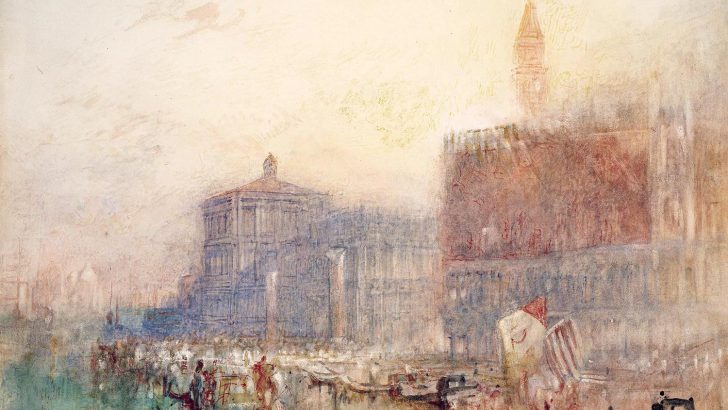An exhibition curated by Niamh MacNally at the National Gallery of Ireland, Merrion Square, to January 31, 2022
Print Gallery | Admission free (book your free entry ticket in advance)
The National Gallery’s remarkable holding of watercolours by the English genius Joseph Mallord William Turner is shown only in January.
In 1900, at the very end of the Victorian era, the Gallery received a bequest of 31 watercolours and drawings by J.M.W. Turner (1775–1851) from the English collector Henry Vaughan.
Vaughan stipulated in his will that the watercolours be exhibited every year, free of charge, for the month of January, when the natural light is at its weakest. Since 1901, the gallery has conscientiously displayed the watercolours in this restricted way.
Topographical
This year the second gallery of the print gallery is filled with a group of topographical drawings by the English artist Francis Place (1647–1728). These make a striking contrast to the Turners.
Place visited Ireland in the summer of 1698. His are purely topographical drawings, but of great historical interest as records of scene and site, offering the curator says “a rare glimpse of 17th Century Ireland”.
Place’s are the earliest known depictions of the cities of Dublin, Drogheda, Kilkenny and Waterford in the gallery collection. Here we can detect the ruin which overlay much of the battle scared post-Cromwellian, post-Williamite country. They make a contrast to the all too often promoted civilised Georgian views in the 18th Century.
His are purely topographical drawings, but of great historical interest as records of scene and site”
The period that followed saw the restoration of a real sense of beauty with emergence of the picturesque that evolved into the romantic treatments of landscape. (This 19th style in the middle of the last century saw the revival of the British neo-romantic movement of John Piper and others, which represents, some think, a last flourish of a style deeply imbued with a true love of and an almost religious engagement with the environment).
Sui generis
Turner has always been an artist sui generis. In a canvas such as Rain, Steam and Speed he evokes what might be seen as an epitome of the industrial age confronting nature without a factory in sight! But the watercolours on show here are moments of time caught in flight, as evanescent as a morning mist; they too are truly magical.
As they can only be seen once a year by the term of their donation to the gallery at the end of the Victorian era, the annual selection, mounted always in January, should be visited almost as an obligation, come hail, rain or sleet one might almost say.
This dual show, so full of remarkable images, in such contrasting styles, can be visited online, but the experience is not at all the same as seeing them in person, especially what exhibition curator Niamh MacNally calls “this exquisite collection of light-filled watercolours by Turner”. Carpe diem.


 Peter Costello
Peter Costello Joseph Mallord William Turner (1775-1851), Storm at the Mouth of the Grand Canal, Venice, c.1840
(photo © National Gallery of Ireland, NGI.2426; image courtesy of NGI)
Joseph Mallord William Turner (1775-1851), Storm at the Mouth of the Grand Canal, Venice, c.1840
(photo © National Gallery of Ireland, NGI.2426; image courtesy of NGI) 